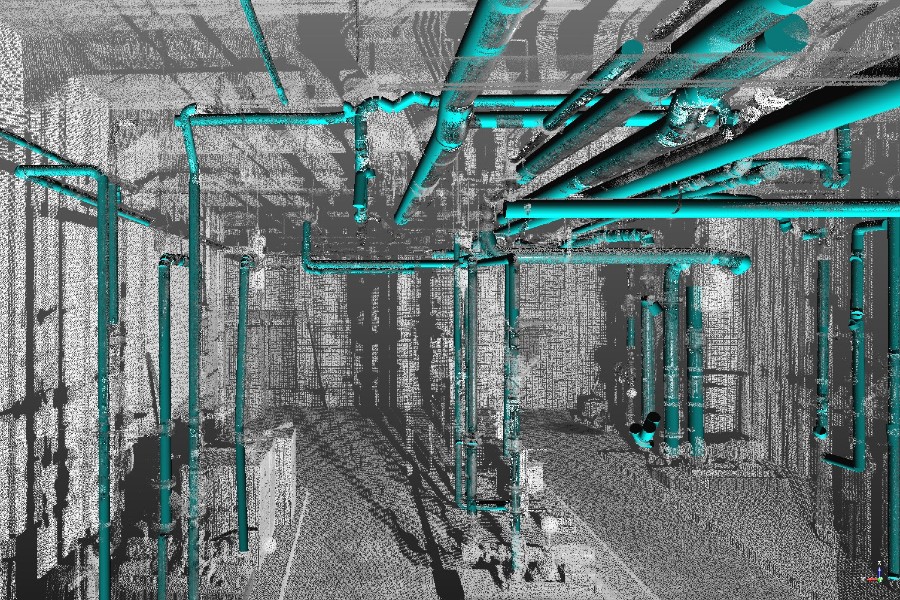
Building Information Modeling (BIM) has revolutionized the construction industry by enabling a collaborative, data-driven design, construction, and facility management approach.
BIM digitally represents a building or infrastructure project, incorporating detailed 3D models, accurate data, and other information elements. It provides a comprehensive and holistic view of the project, allowing stakeholders to make informed decisions throughout the project lifecycle.
BIM offers numerous benefits for infrastructure projects, including enhanced visualization, reduced clashes and conflicts, improved cost estimation, efficient scheduling, and streamlined facility management. As a result, BIM has gained widespread adoption in the construction industry, becoming an indispensable tool for architects, engineers, contractors, and facility managers.
The Role of BIM in Infrastructure Projects
In infrastructure projects, BIM is pivotal in optimizing various aspects of the project lifecycle. Let’s explore some key areas where BIM services provide significant value:
● BIM for Design and Visualization in Infrastructure Projects
BIM allows designers and engineers to create detailed 3D models of infrastructure projects, ranging from roads, bridges, and railways to airports and utilities. These models offer a realistic visualization of the proposed project, aiding stakeholders in better understanding the design intent. Additionally, BIM facilitates the exploration of alternative design options, leading to more informed decisions and optimized designs.
● BIM for Clash Detection and Coordination
Infrastructure projects often involve complex systems and elements that must seamlessly fit together. BIM’s clash detection capabilities identify potential conflicts and interferences between various building components, such as structural elements, electrical systems, and plumbing. By detecting clashes early in the design phase, costly rework and delays during construction can be significantly reduced.
● BIM for Quantity Takeoff and Cost Estimation
Accurate quantity takeoff and cost estimation are crucial for successful infrastructure projects. BIM enables automated quantity extraction from the 3D models, eliminating manual takeoff errors and providing precise quantities for materials and resources. This data empowers project stakeholders to generate accurate cost estimates, aiding in budget planning and control.
● BIM for Construction Scheduling and Phasing
With BIM, construction schedules can be visualized in a 4D format, integrating the time dimension with the 3D model. This enables project teams to evaluate construction sequences, identify potential delays, and optimize construction phasing. The 4D simulations help improve project timelines, minimize disruptions, and enhance efficiency.
● BIM for Facility Management and Maintenance
The benefits of BIM extend beyond construction into the operational phase of the infrastructure project. BIM models serve as a valuable source of information for facility managers, housing critical data about equipment, materials, maintenance schedules, and warranties. With BIM, facility managers can efficiently plan maintenance activities, track asset performance, and ensure the longevity of the infrastructure.
Challenges in Implementing BIM in Infrastructure Projects
While adopting BIM in infrastructure projects offers numerous advantages, it also has some challenges. Here are the key hurdles and possible solutions:
● Adoption Challenges Faced by Infrastructure Firms
Implementing BIM requires significant changes in traditional workflows and processes, which can be met with resistance from stakeholders unfamiliar with BIM. To overcome this challenge, firms should invest in comprehensive training programs to familiarize their staff with BIM tools and methodologies. Furthermore, demonstrating successful case studies can help build confidence in the efficacy of BIM. Increasing demand for efficient infrastructure design and construction has led to a surge in adopting Revit drafting services, revolutionizing how projects are planned and executed.
● Overcoming Interoperability Issues with BIM Software and Tools
The BIM ecosystem comprises various software and tools from different vendors, leading to potential interoperability issues. To ensure seamless data exchange, it’s essential to use open file formats and establish clear communication protocols among project participants. Adopting cloud-based collaboration platforms can streamline data sharing and enhance project coordination.
● Addressing the Learning Curve and Training Needs of Project Stakeholders
Integrating BIM successfully requires a collective effort from all stakeholders involved in the project. Providing comprehensive training and workshops to architects, engineers, contractors, and facility managers can accelerate learning and encourage team members’ collaboration.
● Data Security and Confidentiality Concerns with BIM Implementation
As BIM involves sharing sensitive project data, ensuring data security and confidentiality is important. Firms should establish robust data management protocols, implement access controls, and use encryption methods to safeguard project information.
Conclusion
BIM has transformed infrastructure projects by providing a 360-degree perspective throughout the project lifecycle. BIM’s data-rich and collaborative approach enables stakeholders to make informed decisions, optimize project outcomes, and foster sustainable practices, from design and construction to facility management and sustainability.
- Salters Scene: EatOkra Culinary Creatives Conference 2024
- Sponsored Love: Enhancing Your Workspace By Finding The Best Executive Office Design For Your Office in Philippines
- Sponsored Love: Choosing The Perfect Must-Have Executive Office Furniture in Philippines
- Op-Ed: The Capital One And Discover Merger Would Inject Competition Into A Market Long Dominated By A Handful Of Giants
- Sponsored Love: Step Into Speed With Used Ferrari Cars For Sale
Become a Harlem Insider!
By submitting this form, you are consenting to receive marketing emails from: . You can revoke your consent to receive emails at any time by using the SafeUnsubscribe® link, found at the bottom of every email. Emails are serviced by Constant Contact









